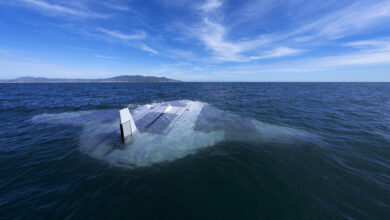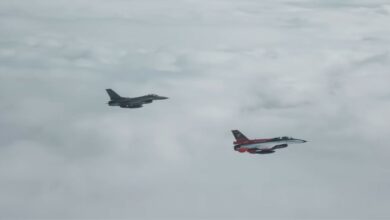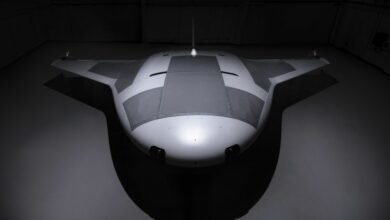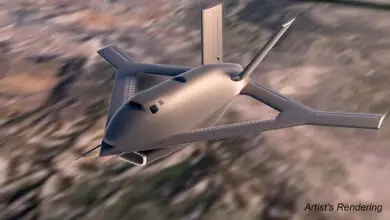The Defense Advanced Research Projects Agency (DARPA) has picked six designs for the next phase of its AdvaNced airCraft Infrastructure-Less Launch And RecoverY (ANCILLARY) program.
Designs by AeroVironment, Griffon Aerospace, Karem Aircraft, Method Aeronautics, Northrop Grumman, and Sikorsky were selected out of a total of nine, including Leidos, AVX Aircraft, and Piasecki Aircraft.
“The goal of ANCILLARY is to increase small vertical take-off and landing (VTOL) uncrewed aerial system (UAS) capabilities by a factor of three over the current state-of-the-art flying today,” DARPA program manager for ANCILLARY Steve Komadina said.
“Our performers are searching for innovative ways to increase payload weight and range/endurance of small, ship-launched UAS by means of novel configurations, propulsion, and controls while also removing the need for special infrastructure.”

Requirements
The program intends to develop a small UAS capable of operating out of naval vessels “without the large mechanical launchers and landing/recovery equipment used today,” DARPA explained.
The VTOL-capable aircraft should be able to take off and land on ship decks and remote land locations, even in adverse weather conditions.
“A network of these small UAS can be launched from a ship to provide beyond-line-of-sight F2T2 (find, fix, track, target) of surface vessels of interest for the ship commander,” Komadina said.
“While we anticipate this effort is most likely to support Navy and Marine missions, we have found other services are very interested in the capabilities this technology can bring to diverse missions, including logistics, strike, and special uses by the Army, Air Force, Special Operations Command, and Coast Guard.”
To Culminate in 2026
Performers will continue risk reduction, analysis, and tests for an X-plane demonstrator in the 10-month Phase 1b.
Competitive proposals will be submitted at the end for Phase II, including detailed design, fabrication, and flight testing.
The project is expected to culminate with flight testing in early 2026.











